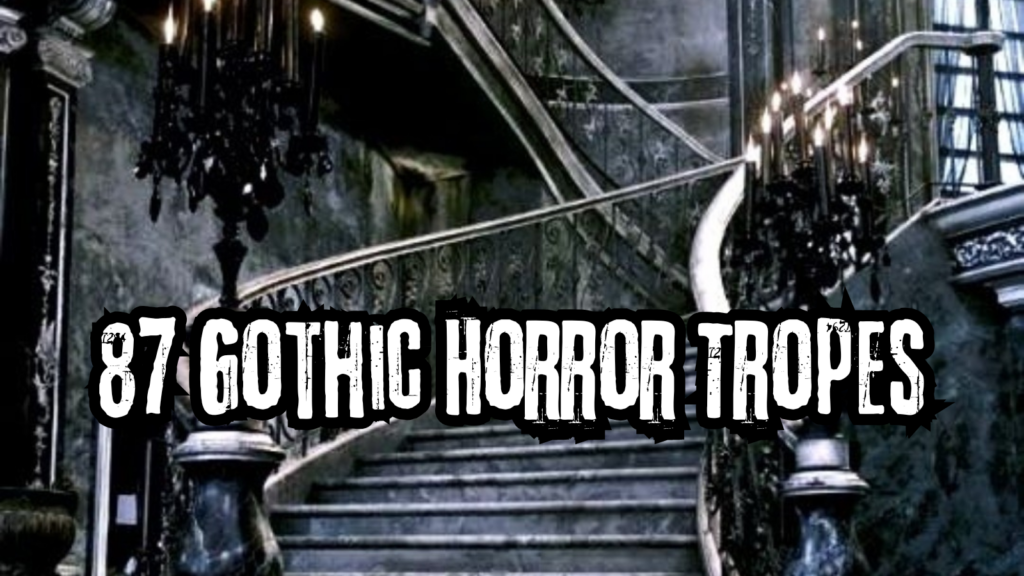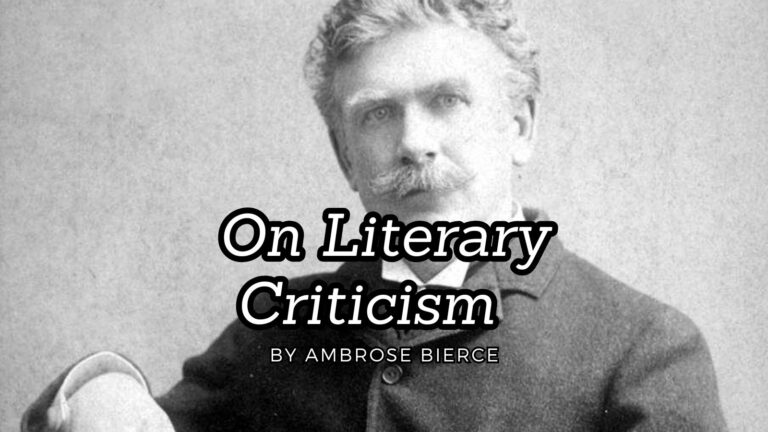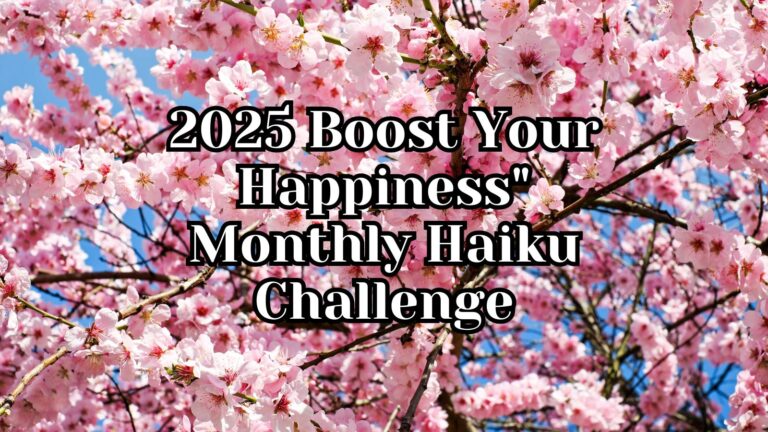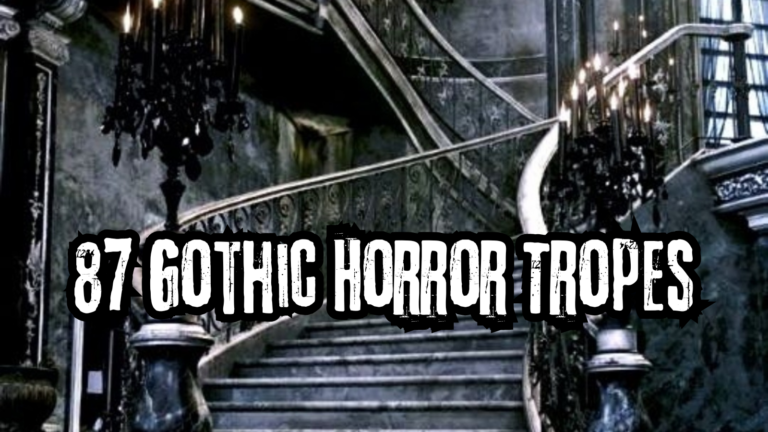87 Gothic Horror Tropes
The gothic horror tradition has captivated readers and viewers for centuries, weaving tales of dread, supernatural terror, and psychological unease that continue to resonate in contemporary fiction. These 87 tropes represent the building blocks of gothic storytelling—the recurring elements that create the genre’s distinctive atmosphere of foreboding and existential horror.
From decaying mansions harboring terrible secrets to the psychological deterioration of characters confronting the unknown, these tropes explore humanity’s deepest fears and anxieties. They examine the boundaries between life and death, sanity and madness, and the natural and supernatural. Gothic horror uniquely positions itself at these thresholds, creating tension through ambiguity and the unsettling sensation that reality itself may be unreliable.
Whether you’re a writer seeking inspiration, a reader looking to better understand the genre’s patterns, or a scholar examining gothic conventions, this comprehensive collection offers a window into the mechanisms that make gothic horror so enduringly powerful. These tropes can be found across literature, film, television, and games—from classic works like “Frankenstein” and “Dracula” to modern interpretations in contemporary horror.
Each trope represents not just a narrative device but a symbolic exploration of cultural anxieties, repressed desires, and the darker aspects of human experience that continue to haunt us across generations.
What is Gothic Horror?
Gothic horror is a genre that combines elements of horror and romanticism, characterized by its atmosphere of mystery, dread, and psychological tension. Dating back to the late 18th century with Horace Walpole’s “The Castle of Otranto” (1764), gothic horror emerged as a distinct literary form that explored the darker aspects of human experience against backdrops of supernatural menace and decay.
At its core, gothic horror concerns itself with boundaries and their violation—between past and present, life and death, natural and supernatural, reason and madness. The genre often features settings that physically embody these thresholds: crumbling castles with forgotten passageways, ancient mansions with forbidden rooms, or wild landscapes that exist at the edge of civilization.
Gothic horror is distinctive for its aesthetic of the sublime—a quality of greatness or vastness that inspires awe and terror simultaneously. This manifests in overwhelming landscapes, ancient ruins, or cosmic horrors that remind characters (and readers) of their own insignificance in the face of time, nature, or supernatural forces.
Psychologically, gothic horror explores the return of the repressed—the idea that what society or individuals attempt to bury or deny will inevitably resurface in distorted, monstrous forms. This preoccupation with secrets, hidden histories, and suppressed desires gives the genre its persistent relevance, as each era finds new fears to confront through gothic metaphors.
While the genre has evolved significantly since its origins, modern gothic horror maintains its essential qualities: atmospheric tension rather than mere shock, psychological depth rather than simple scares, and a lingering sense of unease that comes from confronting that which should remain hidden. Whether in literature, film, television, or games, gothic horror continues to provide a framework for examining the darker aspects of humanity and the unknown forces that may exist beyond our understanding.
Gothic horror differs from other horror subgenres in its emphasis on atmosphere over action, psychological terror over physical violence, and its persistent engagement with themes of decay, transgression, and the weight of the past upon the present. These qualities have allowed it to remain relevant for centuries, continually reinventing itself while maintaining its distinctive gothic sensibility.
Why Gothic Horror Tropes Matter
Gothic horror tropes serve as more than just storytelling conventions—they function as a sophisticated language that connects creators and audiences across centuries of literary and visual media. Understanding these tropes provides several important benefits:
Cultural Significance: Gothic tropes reflect the anxieties and preoccupations of their times. The haunted castle emerged during periods of social upheaval when traditional power structures were being questioned. The mad scientist appeared as technological advances raised ethical concerns about the limits of human knowledge. By studying these tropes, we gain insight into historical and contemporary fears.
Psychological Depth: Gothic tropes often externalize internal psychological states. The decaying mansion represents the deteriorating mind; the doppelgänger embodies repressed desires; the forbidden room symbolizes confronting suppressed trauma. These tropes allow creators to explore complex psychological terrain through tangible, evocative imagery.
Creative Flexibility: For writers and other creators, familiarity with these tropes provides both foundation and opportunity. Gothic tropes can be employed traditionally, subverted creatively, or combined in innovative ways to create stories that feel both familiar and fresh. The most effective gothic works often acknowledge traditional tropes while finding new angles to explore.
Reader/Viewer Connection: When audiences recognize gothic tropes, it creates a sense of participation in the narrative tradition. The familiarity of certain elements allows creators to establish expectations that can then be fulfilled in satisfying ways or deliberately undermined for dramatic effect.
Cross-Media Versatility: Gothic tropes translate remarkably well across different media—from literature to film, television, games, and visual arts. The visual language of gothic horror remains instantly recognizable whether in Bram Stoker’s original text or the latest vampire film.
Enduring Relevance: While specific fears change across generations, the fundamental anxieties that gothic horror addresses—death, identity, sexuality, the unknown, the past’s influence on the present—remain constant in human experience. Gothic tropes continually adapt to address contemporary concerns while maintaining connections to their historical roots.
Understanding these tropes isn’t merely academic—it enhances our appreciation of gothic horror by revealing the rich layers of meaning, history, and psychological insight embedded within seemingly simple conventions. For both creators and audiences, gothic tropes provide a shared vocabulary for exploring humanity’s darkest fears and most troubling questions.
How Writers Can Use This List of Gothic Tropes
This collection of 87 gothic horror tropes serves as both toolbox and inspiration for writers working in or adjacent to the genre. Here’s how you can effectively incorporate these elements into your creative work:
Combine and Subvert: Rather than simply deploying tropes in their familiar forms, consider unexpected combinations or deliberate subversions. Pair “The Ancient Castle” with “Gothic Technology” to create a haunted smart home. Transform “The Innocent in Peril” by revealing they’ve been the threat all along.
Modernize Traditional Elements: Update classic tropes for contemporary settings and concerns. “The Found Manuscript” might become discovered digital files or corrupted data. “Gothic Isolation” could manifest in social media addiction rather than physical seclusion.
Use Tropes as Starting Points: Let a single compelling trope spark your entire narrative. What happens when “The Shifting Architecture” affects an apartment building in a gentrifying neighborhood? How might “Inherited Guilt” play out across generations of a family confronting historical wrongs?
Create Depth Through Layering: Rather than relying on a single dominant trope, layer multiple elements to create richness and complexity. A story featuring “The Gothic Mirror,” “Disintegration of Identity,” and “The Doppelgänger” creates a multifaceted exploration of fractured selfhood.
Recognize Cultural Context: Understand the historical and psychological underpinnings of these tropes to use them more intentionally. Many gothic elements emerged from specific cultural anxieties—consider what contemporary fears your work might address through these traditional forms.
Balance Recognition with Innovation: The most effective gothic fiction acknowledges genre expectations while offering something new. Readers should recognize familiar elements but be surprised by your unique approach or interpretation.
Remember that these tropes aren’t formulaic requirements but rather powerful narrative tools with deep cultural resonance. Used thoughtfully, they connect your work to a rich tradition while allowing you to explore the psychological, supernatural, and existential questions that continue to haunt us in the modern world.
87 Gothic Horror Tropes
- The Ancient Castle/Mansion – A decaying, isolated structure with a dark history, hidden passageways, and forbidden rooms. The architecture itself often mirrors the psychological state of its inhabitants.
- The Supernatural Entity – Ghosts, demons, vampires, or other paranormal beings that torment the living. These entities often represent past sins or unresolved trauma.
- Psychological Deterioration – The gradual descent into madness as characters face horrors beyond comprehension or confront their deepest fears and guilt.
- Gothic Weather – Perpetual storms, fog, darkness, and winter landscapes that create an atmosphere of isolation and dread, often reflecting characters’ emotional states.
- Forbidden Knowledge – Ancient tomes, occult rituals, or scientific experiments that breach the boundaries of what humans were meant to know, unleashing terrible consequences.
- The Innocent in Peril – A virtuous character (often a young woman) threatened by sinister forces, representing the corruption of innocence by evil.
- Transgressive Desires – Repressed passions, taboo relationships, or forbidden longings that lead to destruction when unleashed.
- The Unreliable Narrator – A storyteller whose perception is compromised by madness, guilt, or supernatural influence, leaving readers uncertain about what is real and what is imagined.
- The Uncanny – Objects, places, or people that seem familiar yet disturbingly wrong, creating a sense of cognitive dissonance that unsettles both characters and readers.
- Entombment/Premature Burial – The terror of being buried alive or trapped in enclosed spaces, representing fears of powerlessness and the grave.
- Gothic Doubles – Mirrored characters who represent opposing aspects of human nature (reason/passion, virtue/vice) but are secretly interconnected.
- The Found Manuscript – Discovered journals, letters, or recordings that reveal horrifying truths from the past, often framing the larger narrative.
- Perversion of the Sacred – Corrupted religious imagery, desecrated churches, fallen priests, or twisted rituals that subvert what should be holy and protective.
- The Grotesque – Physical deformity or monstrosity that reflects moral corruption, often eliciting both sympathy and horror.
- The Ancestral Portrait – Paintings or photographs that seem to watch, change, or exert influence over the living, blurring boundaries between art and life.
- Disintegration of Identity – Characters who lose their sense of self through supernatural influence, psychological trauma, or societal pressure.
- Gothic Science – The dark side of scientific progress, where human experimentation, reanimation of the dead, or attempts to harness forbidden forces lead to catastrophe.
- The Haunted Object – Cursed artifacts, possessed dolls, or enchanted mirrors that serve as conduits for evil forces, often with histories of tragedy attached to them.
- The Outsider/Stranger – A mysterious foreigner or newcomer whose arrival disrupts the established order and brings dormant evils to the surface.
- Temporal Distortion – Disruptions in linear time where past and present bleed together, often revealing cyclical patterns of horror or suggesting that escape from history is impossible.
- The Feral Child – Children raised in isolation, by animals, or under supernatural influence who embody both innocence and primordial savagery.
- Gothic Sexuality – Destructive passion, monstrous reproduction, or predatory desire that threatens social boundaries and personal identity.
- The Living Dead – Beings caught between life and death (revenants, zombies, the unnaturally preserved) who represent the failure of proper endings and closure.
- Inherited Guilt – Characters forced to atone for sins they didn’t personally commit, suggesting moral debts that transcend individual lifetimes.
- The Sublimely Terrible – Overwhelming landscapes, cosmic horrors, or ancient ruins that inspire both awe and terror through their magnitude and indifference to human concerns.
- The False Savior – Mentors, doctors, or authority figures who initially appear helpful but ultimately reveal themselves as agents of harm or exploitation.
- Corrupted Innocence – The transformation of pure beings (often children or young women) into vessels of horror, subverting expectations of innocence and highlighting corruption’s invasive nature.
- The Cursed Lineage – Families doomed to repeat specific tragedies or fated to produce monstrous offspring, suggesting that some bloodlines are marked for suffering.
- Gothic Isolation – Physical or psychological separation from society that leads to deterioration, delusion, or vulnerability to supernatural forces.
- The Living House – Architecture that seems sentient, malevolent, or biologically alive, blurring boundaries between structure and organism.
- Forbidden Places – Locations explicitly banned from entry (attics, cellars, locked rooms, overgrown gardens) that inevitably contain revelations central to understanding the horror.
- Gothic Disease – Mysterious illnesses, plagues, or contagions that manifest both physically and spiritually, often symbolizing moral or social corruption.
- The Buried Secret – Hidden crimes, concealed identities, or suppressed memories that resurface to haunt the present, suggesting that truth cannot remain hidden.
- The Gothic Mirror – Reflective surfaces that reveal hidden truths, alternate realities, or the viewer’s true nature rather than their physical appearance.
- Monstrous Transformation – The physical metamorphosis of humans into beasts or abominations, often as punishment for transgression or manifestation of inner corruption.
- The Revenant – Those who return from death with unfinished business, whether for vengeance, love, or to right past wrongs, challenging the finality of death.
- The Unconsecrated Ground – Burial sites, abandoned cemeteries, or lands where terrible events occurred that become thin places between worlds, allowing supernatural forces to manifest.
- Gothic Technology – Machines, devices, or scientific instruments that take on sinister qualities or open doorways to forbidden realms when they malfunction or are misused.
- The Sublime Wilderness – Untamed natural settings (dense forests, desolate moors, frozen wastes) that evoke both awe and terror, representing forces beyond human control.
- Parasitic Relationships – Bonds where one entity slowly drains the life, sanity, or soul of another, often disguised as love, protection, or mentorship.
- Ancestral Memory – Experiences, knowledge, or curses passed down through blood or psychic connection, suggesting that identity extends beyond individual consciousness.
- The Corrupted Eden – Once-beautiful gardens, estates, or communities that have become twisted parodies of their former glory, representing the fall from grace.
- The Living Corpse – Bodies that refuse proper death or decay, existing in a liminal state that challenges the natural order and boundaries between life and death.
- Gothic Sound – Disembodied voices, mysterious music, or inexplicable noises that herald supernatural presence or psychological breakdown.
- The Price of Forbidden Desire – Terrible consequences that follow when characters pursue what they are denied, whether knowledge, power, love, or vengeance, suggesting that transgression inevitably leads to punishment.
- Gothic Sacrifice – Ritual offerings, voluntary martyrdom, or unwilling victims whose deaths are meant to appease supernatural forces or fulfill ancient prophecies.
- The Hungry Shadow – A darkness that consumes, whether literal or metaphorical, representing the void that lies beneath civilization’s thin veneer.
- Gothic Motherhood – Pregnancy, birth, and maternal relationships tinged with horror, often featuring monstrous offspring or maternal madness.
- The Gothic Archive – Collections of forbidden knowledge, cursed artifacts, or preserved specimens that document humanity’s darkest aspects.
- Necromantic Love – Romantic attachments that persist beyond death, becoming twisted, possessive, or destructive in their refusal to accept separation.
- The Betrayed Oath – Ancient promises, sacred vows, or binding contracts violated with catastrophic supernatural consequences.
- The Gothic Experiment – Scientific or occult procedures conducted without ethical restraint, often blending science with forbidden mysticism.
- The Changeling – Beings secretly substituted for humans (often in childhood), representing fears of identity theft and the uncanny impersonator.
- The Unhallowed Feast – Food and dining rituals perverted into cannibalism, poisoning, or supernatural consumption, transforming nourishment into corruption.
- Gothic Time – Clocks that run backward, stopped timepieces marking moments of death, or temporal loops where characters are doomed to repeat their tragedies.
- The Living Darkness – Shadows that move independently, darkness that has substance and agency, or night that refuses to yield to dawn.
- The Gothic Double Bind – Moral dilemmas where all choices lead to corruption, forcing characters to choose between different forms of damnation.
- Stolen Identity – The appropriation of another’s life, body, or personhood through supernatural means, challenging the boundaries of self.
- The Gothic Relic – Objects from the past that carry psychic imprints or supernatural power, acting as conduits between historical trauma and present horror.
- Unnatural Symmetry – Perfect doubles, mirror worlds, or excessive order that signals supernatural manipulation beneath seemingly rational surfaces.
- The Violated Threshold – Boundaries (doorways, windows, mirrors) that should separate different domains but have been compromised, allowing transgressive passage.
- Gothic Justice – Supernatural retribution that exceeds the original crime, often administered by beings or forces outside human moral frameworks.
- The Sentient Landscape – Environments that possess consciousness and malevolent intent, from forests that manipulate paths to mountains that lure travelers to their doom.
- Gothic Nostalgia – Yearning for a past that never truly existed, or whose true horror has been sanitized in memory, pulling characters back into cycles of trauma.
- The Liminal Space – Thresholds, crossroads, and in-between places where normal rules suspend and supernatural forces gain power.
- The Gothic Collection – Obsessive gathering of objects, specimens, or even people that begins as scholarly pursuit but descends into madness.
- The Gothic Bargain – Faustian pacts or seemingly beneficial arrangements with entities that exact terrible unforeseen costs.
- Haunted Creativity – Art, music, or literature that channels supernatural forces, often created in altered states and capable of affecting reality.
- The False Refuge – Sanctuaries that initially appear safe but ultimately trap their inhabitants, becoming prisons or sacrificial grounds.
- Gothic Inheritance – Bequeathed properties, objects, or titles that come with hidden supernatural conditions or burdens.
- The Animated Object – Inanimate items that move, speak, or act with apparent consciousness, blurring boundaries between the living and non-living.
- The Soul Container – Objects that house trapped souls or fragments of consciousness, often collecting spiritual energy for nefarious purposes.
- The Shifting Architecture – Buildings that rearrange themselves, grow new rooms, or physically respond to the psychological states of their inhabitants.
- Gothic Contagion – Horror that spreads from person to person through contact, knowledge, or proximity, functioning like a supernatural epidemic.
- The Malevolent Guide – Seemingly helpful figures who deliberately lead characters deeper into danger or toward predetermined doom.
- The Gothic Machine – Clockwork, steam-powered, or electrical devices that develop sinister autonomy or serve as conduits for supernatural forces.
- The Living Mask – Disguises that begin to merge with their wearers, altering identity and eventually taking control.
- Gothic Resurrection – Returns from death that are always incomplete or corrupted, emphasizing that what comes back is never truly what was lost.
- The Invaded Body – Possession, parasitic infestation, or gradual replacement of self by an external entity.
- The Unspeakable – Horrors that literally cannot be articulated, causing language to break down when characters attempt description.
- The Perverted Ritual – Sacred or traditional ceremonies twisted into dark parodies that invoke malevolent forces.
- The Sympathetic Monster – Beings initially perceived as threats who are revealed to be tragic victims of circumstance or cruelty.
- The Price of Immortality – Eternal life achieved through terrible means, inevitably leading to corruption, ennui, or loss of humanity.
- The Gothic Carnival – Traveling shows, circuses, or fairs harboring supernatural entities behind their exotic façades.
- Infectious Madness – Insanity that spreads from person to person through proximity or shared experience.
- The Gothic Echo – Sounds, events, or experiences that repeat with uncanny similarity, suggesting a breakdown in temporal boundaries.
- Gothic Consumption – Entities that feed on emotions, memories, youth, or life essence rather than merely physical sustenance.
Embracing the Gothic Tradition
The 87 gothic tropes explored in this collection represent centuries of storytelling tradition that continues to evolve and resonate with contemporary audiences. From crumbling castles to psychological deterioration, from haunted objects to corrupted innocence, these elements provide endless possibilities for exploring humanity’s deepest fears and most troubling questions.
Gothic horror endures because it addresses the shadows we all carry—the anxieties about death, identity, the past, and the unknown that remain constant across generations. By understanding these tropes, we gain not just appreciation for the genre’s history but also insight into our own psychological landscape.
Join Our Community of Gothic Enthusiasts
Want to stay updated on gothic literature, writing tips, and exclusive content? Join our mailing list to receive monthly newsletters featuring author interviews, reading recommendations, and writing prompts inspired by these timeless tropes. Simply enter your email below to connect with fellow enthusiasts who share your passion for the darker side of storytelling.
Your Turn to Create
We encourage you to use these tropes as inspiration for your own gothic tales. Whether you’re crafting a short story about a haunted object, a novel exploring psychological deterioration, or poetry evoking the sublime wilderness, the gothic tradition welcomes your unique perspective. Remember that the most compelling gothic works don’t simply replicate these tropes but reimagine them for new contexts and concerns.
Share Your Thoughts
How did you connect with this collection of gothic tropes? Did we miss any of your favorites? Perhaps you’ve recently encountered an innovative use of these elements in contemporary fiction? Leave a comment below to share your insights and join the conversation with our community of gothic horror enthusiasts.
The shadows are always waiting for new stories to be told within them—we hope this collection inspires you to venture into the darkness and discover what awaits.
- A Complete Guide to the Hero’s Journey in Storytelling (Free Worksheet) - April 10, 2025
- On Literary Criticism by Ambrose Bierce - April 9, 2025
- 2025 “Boost Your Happiness” Monthly Haiku Challenge - April 9, 2025







